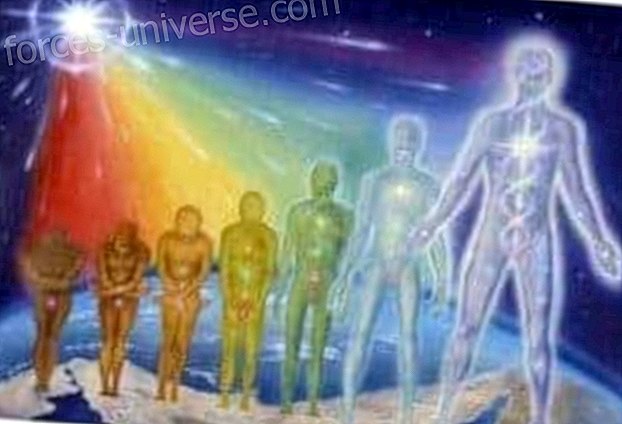Friday at night. Tomás Cubelli, half-scrum of Los Pumas and Red Bull athlete, builds his own preview. There is no bowling or roast in this scene. There is instead a yoga class at the Athletic Club of Belgrano. His teammates are not exactly high-performance athletes but healthy retirees and contemplative girls, but he couldn't be more comfortable. He landed in this place seeking to combat waist aches, caused by the significant burden he uses to train with the national rugby team. His kinesiologist asked him to incorporate discipline into his routine and he decided to try. If there is something that came to be clear, it was how to use your muscles. However, he was surprised.
“ It seemed like a joke, I couldn't even sit in certain positions, all the hard work I did these years had conditioned my elongation and elasticity. Some old ladies had more flexibility than me, ”he explains with a laugh. Accustomed to the challenges, it was not hard for him to understand what this would be. “It is not a competitive sport, the fight would be with myself. Here you have to be humble, meet your limitations and work them differently, with time, ”he explains.
Tomi deepens: “ I discovered my body from another side. I found pain and muscles with which I was not connected, I began to move them, put them into action and that improved me on the court, ”he says. Today, he finds in the calm of yoga, the body consciousness that the immediacy and brutality of rugby annuls. That's why he made it part of his Friday routine. “It is my way of getting the weight off of the body week. Here I am low and I am ready to face matches if there are any or enjoy free time if I have to touch it, it is a ground wire, ”he summarizes.
Like Tomi, many elite athletes decided to incorporate into their workouts another type of physical activity calmer but no less intense and, fundamentally, focused on achieving concentration and mental calm. Tennis player Maria Sharapova and basketball player Shaquille O'Neal were among the first to detect the functionality of the activity for their performances. Progressively, the world would discover in yoga a decisive ally for the recovery of serious injuries of athletes. This was the case of basketball player LeBron James who suffered a serious injury playing for the NBA and will be, as recently announced, part of Neymar's rehab routine after the injury suffered at the last World Cup. In addition to Cubelli, there are also strong exponents locally.
The national basketball team, the national sailing representative in the next Olympic Games, Santiago Lange, and some of the most prominent marathoners are part of the yogi ranks. They are not the only nor the first. For three decades, discipline has been gaining adherents in our country. But its history is far from having started just thirty years ago

Indra's legacy. It would not be an exaggeration to speak of Buenos Aires as the Latin American capital of self-exploration. Long before Freud launched his psychoanalytic theory into the world and became part of the most frequent conversations in Buenos Aires coffee houses, some yoga teachers had already landed on these lands. They did so just the twentieth century began to spread a discipline that mixed Hinduism with a series of physical postures. Probably, by then, its enormous degree of abstraction and the complex mix of spirituality, physical discipline, food hygiene and mental control were a combo too difficult to assimilate.
We would still have to wait at least 80 years of rational explorations and psychological readings so that some circles, the most intellectual and international in the city, will appear in a new spiritual search engine. According to a reference in the subject, Miryam Vieyto, director of the Argentine Yoga Center, many decided to complement the exacerbated Western rationalization with something they saw beyond. Just then, the right person landed in the city .
In 1982, a disciple of the respected yogi Sri Tirumalai Krishnamacharya, and the first oriental yoga teacher, arrived in Buenos Aires. Indra Devi did not come alone: she was preceded by an international fame acquired thanks to the Hollywood world, who attended classes at her school in Los Angeles.
Aware of the will of Buenos Aires introspection, Devi landed directly to become the president of the International Yoga Federation from where she guided the expansion process. In the following years, the process of westernization in our lands began with a certain secularization: it was cleared (although not emptied) of Hindu content to give it a more general spiritual connotation.
This mutation was especially clear in our country during the military dictatorship of the '70s, at which time in order to continue practicing, it had to be presented much more as a set of therapeutic knowledge than as a spiritual practice . Candles, mantras aloud and meditation rounds were set aside. Discretion took the scene. This process coincided with what happened on the international scene.
To become more understandable, between '86 and '89 you start talking about a scientific yoga, whose physical benefits were medically proven and professionally recommended. Far from being sectarian, it began to be prescribed as a medical practice, beyond the religious beliefs of each person. The benefits of a clear mind, an agile body and balanced emotions became accessible to any open mind that was willing to go for them.

Times of change. One of them was the former Techint manager, Julio Aguirre. He was one of those who responded to the so-called new age early, just beginning the decade of the 1980s when he fell in love with his wife, an Argentine educated in Europe who was a practicing nurse . My world was very formal, very stressful. And she seemed to be in a cloud, always happy, always with a very special attitude. I couldn't help feeling intrigued and started studying with her. What I found was another way to connect with reality, something that I kept through the years, studying with different teachers, until there came a time that I became more necessary than ever, point it out.
That moment came two decades later when, after getting important positions in energy giants such as Atucha, Salto Grande, Yacyret and working at the Inter-American Development Bank, he decided rethink your personal direction. I felt that what I did did not fill me. I was about to turn 50, and I thought about many things, including how to go deeper into the practice of yoga, he explains.
July then decided to go into an Ashram (Hindu monastery). It was in the Bahamas but there was nothing paradise like that place, it was all very austere and our activities consisted of getting up at four in the morning to meditate. Two weeks later, so calm, I got a panic attack but managed to stay the 40 days needed to learn more and there I became convinced that my life had What to change, account. And it changed.
When he returned to the country, Julio received the news that the corralito had seized much of his savings and that many companies were rearranging their employees. Using the crisis as an opportunity he decided to start back and found his own venture: one that would allow him to share everything he had learned. His school Yoga for companies would become a specialist in designing ways to incorporate healthier routines and in the future he would also give personal classes in firms such as ICBC, Procter & Gamble and Standard Bank. I think that more and more companies understand that employees are much more than numbers and that they have to be taken care of as people, not only to perform better, but to be more s happy, he concludes.
Fashion designer Maureene Dinar has been practicing yoga since she was 11 years old. and found in the teaching of this discipline his first job.
For all. Not only over-demanded adults find a backwater in yoga. From the hand of open parents, the youngest also come to class thanks to parents who seek to reveal to them as children the feeling of "being on the axis". Karina Popovsky, a professor at the Eclipse Center, defines it this way: "It is very important that children learn to take a dimension that their body is not only what they see, that breathing and thoughts also influence well-being." Anxieties, insecurities, problems of socialization or concentration, all these items can be treated between asanas and mantras, even though clear ideas about spirituality and energy are not yet formed. “Few things from Eastern culture had such an impact on these sides as Yoga. It is not a passing fad, it is an enrichment that we were wise to embrace. That's why it lasts and that's why it will stay, ”concludes Miryam Vieyto.
Yogi Glossary
Asana : Posture that the body adopts in yoga.
Ashram : Hermitage, house or communal dwelling, where spiritual teachings were taught by a guru to his students.
Ayurveda : One of the two traditional systems of medicine in India.
Chakra : The psycho-energetic centers of the subtle body. There are seven chakras in the body.
Guru : The syllable Gu means "light, " and the Ru means "the destroyer of darkness." The illuminator: one who brings (in the light of) wisdom
Mantra : A divinely charged sound; verbal or nonverbal expressions that bind subconsciousness, awareness, and superconsciousness.
By: Denise Tempone
source : http://7dias.infonews.com
Yoga, the new fashion that athletes chose






